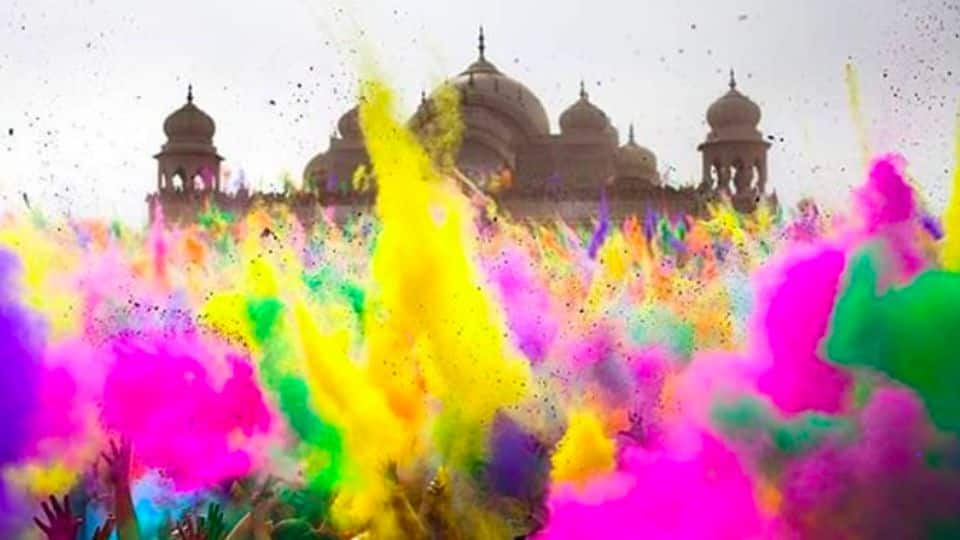
How does India celebrate Holi?
What's the story
Known for spreading love and cheer through colors, Holi marks the harvest season and the coming of spring. Essentially a two-day Hindu festival, it is celebrated every year around the vernal equinox by all irrespective of their caste, religion or ethnicity. As Indians the world over gear up for another Holi, we look at the festival's roots, significance and relevance in popular culture.
Day 1
Holika Dahan: A celebration of good over evil
Hindu mythology links Holi's origin to two unconnected stories. The first is of Prahlad, Lord Vishnu's devotee and the son of King Hiranyakashyap, who walked out unscathed from a burning pyre while his aunt Holika, who wanted to kill him, burned to ashes. Day 1 is therefore called Holika Dahan, in which a pyre is burnt to mark the victory of good over evil.
Day 2
Dhulandi: Of Radha, Krishna, powdered dyes, pichkaris and water balloons
The second day is called Rangwali, Dhuleti, Dhulandi or Dhulivandan. It can be traced back to Lord Krishna, who, insecure about his dark skintone, was worried if his fair beloved Radha would accept him. His mother Yashoda suggested him to smear Radha's face with gulal to bridge the complexion difference, which he did. Ever since, the day has been associated with raucous color playing.
Information
Braj celebrates Holi for over 16 days every year
Holi is celebrated for a minimum of 16 days in Braj, Lord Krishna's birthplace. Moreover, it is also widely believed that it was on Holi that a furious Lord Shiva opened his third eye on Kamadeva, the god of love, and burnt him to death.
Significance
Bura Na Maano Holi Hai: A festival that unites all
Other than secularism, Holi also teaches tolerance. It is a common practice among revelers to hurl insults, abuses and play pranks. The idea is to not mind and be part of the mad festivities. Instead of a specific Gregorian calendar day, Holi is celebrated on the Hindu lunar month Phalgun's last full moon day, which generally falls in March.
Food+Drinks
When all you need is some gulal and a lot of bhaang
The powdered color, known as gulal, was traditionally made from flower extracts, turmeric, sandalwood paste and spices. However, it is now made synthetically and can severely damage skin. A festival notoriously famous for letting loose, Holi is known for bhaang or cannabis paste, which associated with Lord Shiva, is mixed into drinks and food. Other popular Holi delicacies include gujiya and thandai.
Trivia
Coldplay's Hymn for the Weekend is an ode to Holi
Holi is called differently across India. For instance, it is called Rang-Panchami in Maharashtra, Lathi-maar Holi in Mathura, Dulandi in Haryana, Hola Mohalla in Punjab, Phagawn in Bihar, Shingo in Goa, Kaman Pandigai in Tamil Nadu and Basant Utsav/Dol Purnima in West Bengal. The video of rock band Coldplay's 2016 single Hymn for the Weekend depicted Holi. It featured Beyoncé and Sonam Kapoor.